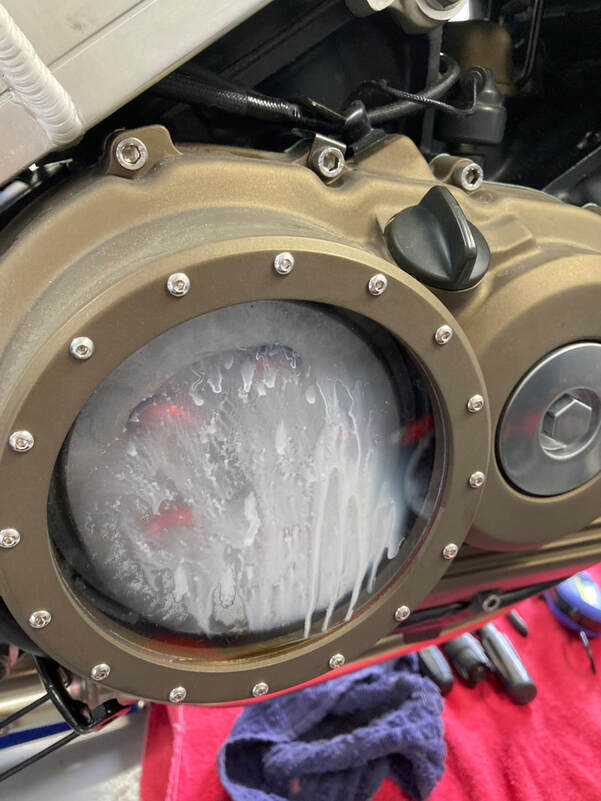Machines don't respond well to disuse, but there's at least one common storage misconception that we need to heed, and that's the fallacy that running an engine during storage is somehow "good" for the machine. It is not, and the photo below is graphic proof. What we're looking at is an amazing window into the innards of a 1986 VFR750F, thanks to Sebspeed's modified clutch cover. What we see is a huge accumulation of moisture created when a cold engine has been run for the first few minutes after startup. What we don't see is the production of acids created by the incomplete combustion process, due to the cold engine's need for a rich fuel setting and those gasses slipping past the not-yet-expanded cylinders and rings. Note that by "cold" I mean any ambient temperature — not just the cold months. This photo was take on a warm summer day.
This situation took 20 minutes of running in order to heat the engine's interior to the point where the excess moisture finally evaporated and the window cleared. When a well-meaning owner starts his engine every few weeks and idles it for several minutes this is what he or she is producing. The inside surfaces of the crankcase are awash in this water and acid soup, and when it's shut down the corrosion of aluminum and steel parts begins — bearings, gears, camshafts, etc. A stored engine does not need this exercise, but if you insist on making yourself feel better by running your stored engine, then it must be taken on the road for at least 20 minutes of normal riding to effectively dissipate this stuff. If not, you're doing more harm than good.
And, speaking of acids, remember that used motor oil holds suspended combustion acids. These too will spend the winter months eating away at your engine's internal bits. That's why engine oil should be changed at the END of the riding season, NOT the beginning.
Be considerate of our machine's needs; when the warm temperatures return we will be rewarded with a willing and able riding companion.

 RSS Feed
RSS Feed